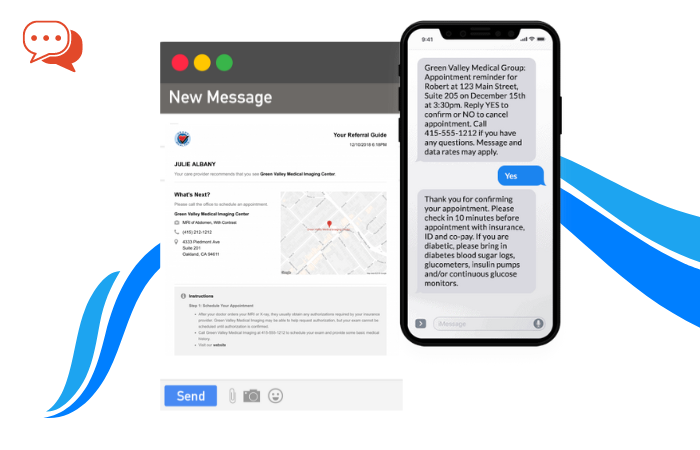While we may wish the healthcare industry did not have as many problems as it does, a common theme keeps occurring, and that is complacency. All too often the bureaucratic nature of how healthcare systems are run prevents newer technology from taking hold on a time scale that can stop the bleeding. While we are seeing some improvement, the statistics and the hard data indicate a change is too slow.
1. It costs nearly $250 billion to process 30 billion healthcare transactions each year (15 billion are faxes)
![]() The healthcare industry is still communicating with internal and external providers using antiquated technologies such as fax, legacy EMR systems, and HL7 interfaces. Unfortunately, it tends to be costly and inefficient due to poor latency and missing information which costs patients and doctors time, money, and sometimes lives.
The healthcare industry is still communicating with internal and external providers using antiquated technologies such as fax, legacy EMR systems, and HL7 interfaces. Unfortunately, it tends to be costly and inefficient due to poor latency and missing information which costs patients and doctors time, money, and sometimes lives.
2. Referral leakage for a health system can average anywhere from 55-65%.
If 55-65% of revenue is lost due to leakage, then a hospital is losing between $821K to $971K on average per physician per year. For a hospital with 100 affiliated providers, total leakage costs the health system between $78M to $97M per year.
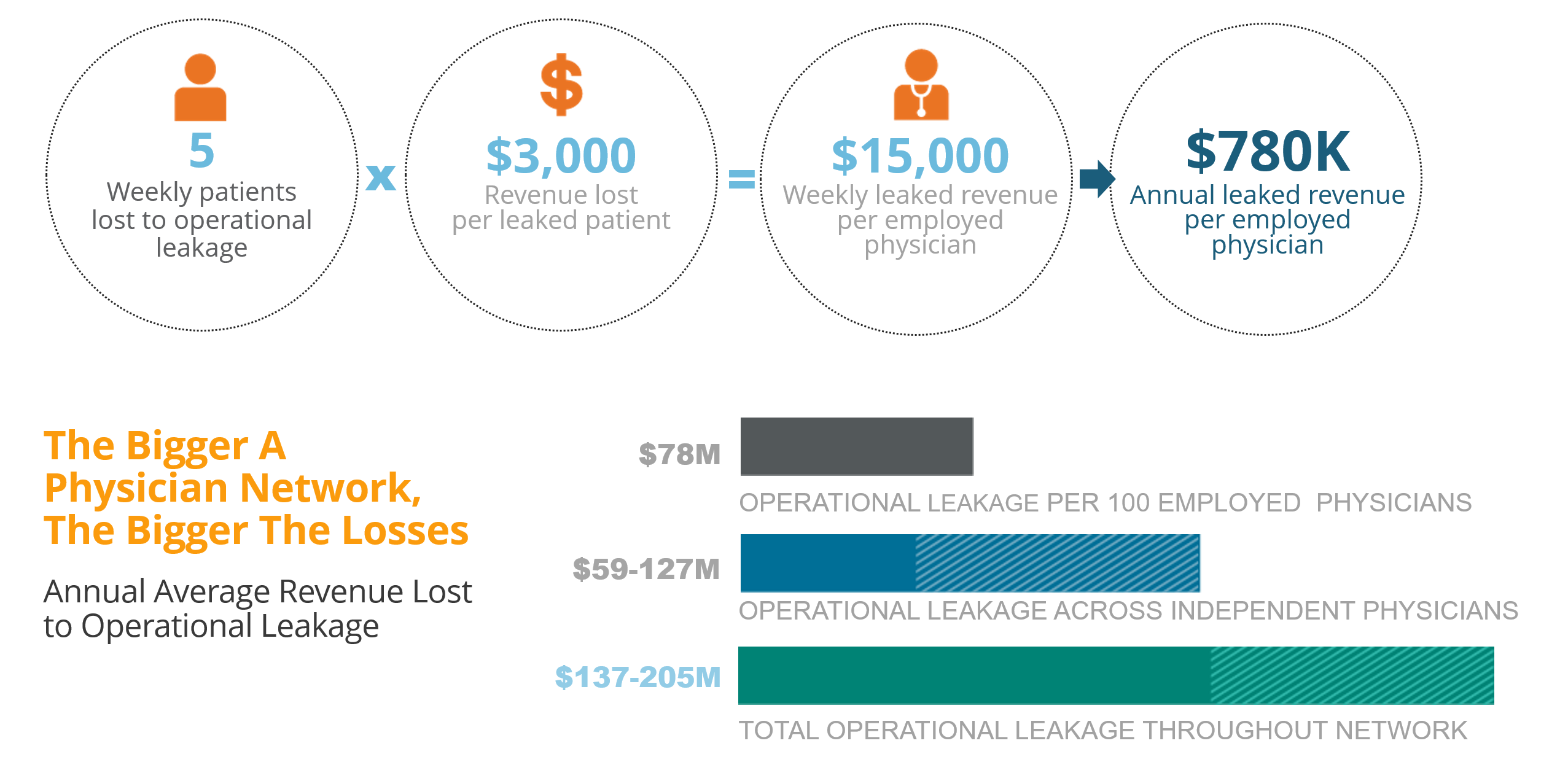
Statistics are from imaging patients
We created ReferralMD with this in mind. We offer a solution to help monitor and manage referral transitions between health systems to ensure that they stay in-network and don’t lose your health system millions in revenue every year. Many of these statistics relate to poor referral management and communication amongst providers. I feel that our platform can help many healthcare institutions avoid being a part of these statistics, and instead be a part of the solution.

3. 63% of referring physicians are dissatisfied with the current referral process due to a lack of timeliness of the information and inadequate referral letter content.
The referral process is a critical component of quality clinical care, and it has become increasingly scrutinized in the managed care era. Physician-to-physician communication is vital to the success of any outpatient referral. Optimal communication involves the transfer of relevant clinical information in both directions (from the referring physician to the specialist and vice versa). Breakdowns in communication can lead to poor continuity of care, delayed diagnoses, polypharmacy, increased litigation risk, and unnecessary testing, all of which diminish the quality of care.
4. 1 out of every three patients is sent to a specialist each year.
In the United States, more than a third of patients are referred to a specialist each year. Indeed, specialist visits constitute more than half of all outpatient visits. Despite the frequency and the importance of the specialty-referral, the process itself has been a long-standing source of frustration for both primary care physicians (PCPs) and specialists. These frustrations, along with a desire to lower costs, has led to the implementation of numerous strategies to improve the entire process, such as using gatekeepers and/or referral guidelines.
![]()
5. 25 to 50% of referring physicians do not know whether their patients see the specialist.
Referral tracking is an important task for the referring provider, to ensure that the referral is completed. Studies have found that 25 to 50% of referring physicians did not know whether their patients had seen the specialist to which they were referred.
6. 70% of the specialists rate the patient referral information they receive from other providers as fair or poor.
PCPs vary in their threshold for referring a patient, which results in both the underuse and the overuse of specialists. Many referrals do not include a transfer of information, either to or from the specialist; and when they do, it often contains insufficient data for medical decision making. Care across the primary-specialty interface is poorly integrated; PCPs often do not know whether a patient went to the specialist, or what the specialist recommended. PCPs and specialists also frequently disagree on the specialist’s role during the referral episode (e.g., single consultation or continuing co-management).
7. The average ratio of staff handling paperwork to doctors can be as high as 4.23 FTE.
 Many physician practices struggle long and hard with finding just the right number of staff to work in just the right jobs at just the right time. Few practices ever master this struggle to reach staffing “utopia.” Those that do attain favorable staffing levels and stability tend to experience it only briefly. The mistake many practices make is adopting an oversimplified and reactionary approach. If the work falls behind, they add staff, or if overhead expenses grow too high, they cut personnel costs.
Many physician practices struggle long and hard with finding just the right number of staff to work in just the right jobs at just the right time. Few practices ever master this struggle to reach staffing “utopia.” Those that do attain favorable staffing levels and stability tend to experience it only briefly. The mistake many practices make is adopting an oversimplified and reactionary approach. If the work falls behind, they add staff, or if overhead expenses grow too high, they cut personnel costs.
8. 86% of mistakes made in the healthcare industry are administrative.
It’s a chilling reality – one often overlooked in annual mortality statistics. Preventable medical errors persist as the No. Three killers in the U.S. – third only to heart disease and cancer – claiming the lives of some 400,000 people each year.
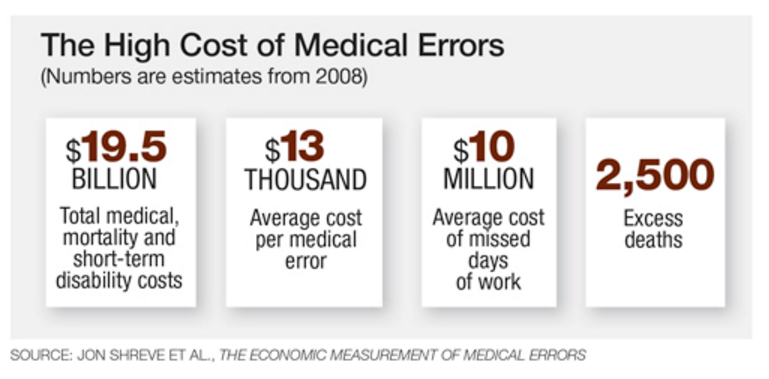
 9. 3 of every ten tests are reordered because the results cannot be found.
9. 3 of every ten tests are reordered because the results cannot be found.
These test results and labs are most likely lost somewhere in the care continuum, whether it be during the transfer from lab to PCP or specialist, or the transfer within hospital departments. This tends to result in redundant tests, which directly leads to the increasing cost of care; but more importantly, can lead to missed diagnoses and treatments, resulting in further injury or even death.
10. Patient charts cannot be found on 30% of visits.
This is a major reason why there has been such a push to move all medical offices and health institutions onto electronic health/medical records (EHR/EMR). By inputting all patient health information into a secure and large database, it eliminates the possibility for patient information to be physically lost or misplaced.
11. Providers need to fill out an average of 20,000 forms every year.
Similar to the statistic above, these inconveniences have led to the widespread adoption of EHR and e-consult software that make the process of delivering health care easier on both providers and patients.
12. The average organization spends about $20 in labor to file each paper document.
According to PricewaterhouseCoopers, the average health organization spends approximately $120 in labor searching for each misfiled document, and $220 for the re-creation of a document.
13. About 80% of all serious medical errors involve miscommunication during care transitions (to different care settings).
Ineffective hand-off communication is recognized as a critical patient safety problem in health care. In fact, an estimated 80% of serious medical errors involve miscommunication between caregivers during the transfer of patients. The hand-off process involves “senders,” those caregivers transmitting patient information and transitioning the care of a patient to the next clinician, and “receivers,” those caregivers who accept the patient information and care of that patient. In addition to causing patient harm, defective hand-offs can lead to delays in treatment, inappropriate treatment, and increased length of stay in the hospital. These days it’s all about the patient experience.
14. As many as 80% of the errors initiating cascades involve informational or personal miscommunication.
This includes information among colleagues, between patient and physician, inaccessible medical records, etc.
15. Missed appointments cost the U.S. healthcare system more than $150 billion a year.
Patient no-shows and inefficiencies in scheduling cost the U.S. healthcare system more than $150 billion a year. Growing research has shown that health institutions and clinics do not properly address chronic patient cancellations or reschedulings, and therefore are just as much to blame for these staggering costs. How can patient communication be improved? Is telehealth part of the answer?
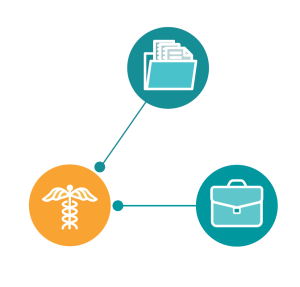 16. Approximately one-quarter of U.S. patients reported that the results and records from one provider did not reach another provider in time for their appointment.
16. Approximately one-quarter of U.S. patients reported that the results and records from one provider did not reach another provider in time for their appointment.
This lack of communication between providers in the care continuum can lead to improper care and further ailment. The fact that 1 in 4 patients have to reiterate their medical history multiple times to multiple providers is detrimental to quality affordable health care.
17. 20% of malpractice claims involve missed or delayed diagnoses due to deficits in hand-offs between providers.
Results from this study conclude that medical errors stem from multiple breakdowns and both individual and system factors. Increasing awareness and communication between providers will help to prevent missed or delayed diagnoses.
18. Healthcare facilities in the United States stand to lose about $364 million in reimbursements.
Of the 3,308 U.S. hospitals subject to Medicare’s HAC program this year, 758 received the penalty compared to 724 last year. Only about half of the penalized providers were subject to the same penalty last year. The facilities in question stand to lose about $364 million in reimbursements.
19. Last year, nearly 18 percent of Medicare patients who had been hospitalized were readmitted within a month.
While that is lower than in past years, roughly 2 million patients return a year, costing Medicare $26 billion. Officials estimate $17 billion of that comes from potentially avoidable readmissions.
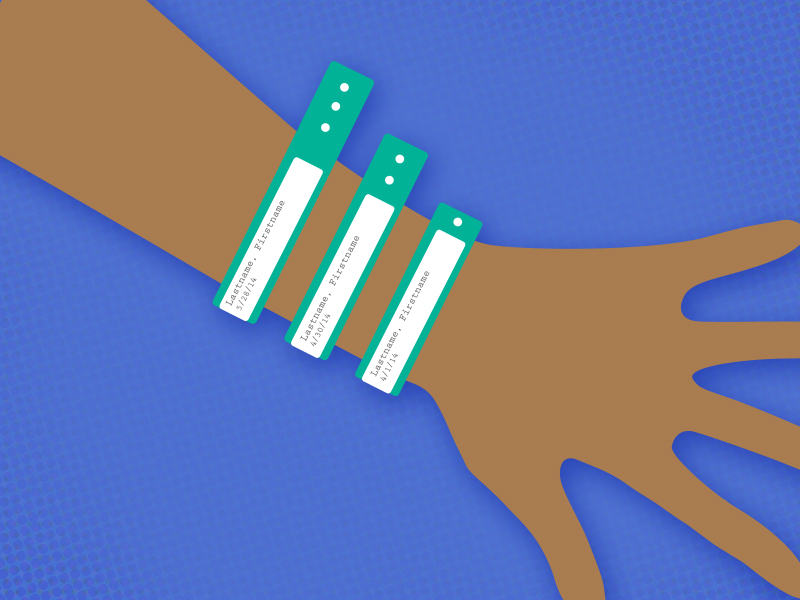
20. Referral leakage costs American hospital systems over $150B a year.
More than 200,000 physicians in the U.S. are now employees, and 3 in 4 medical residents will start their career as employees of a medical group, hospital, or faculty. As healthcare organizations continue to consolidate and build larger networks, better collaboration between primary care and specialists is critical.
21. Only 54% of faxed referrals result in scheduled appointments.
Faxing was invited in the ’60s, yet it is still alive and well in healthcare. I always like to joke; the fax machine is healthcare’s API (Application program interface). It has been made evident that most health systems are reluctant to give up this technology because they see there is no other alternative. This is why referralMD invented the smarter digital fax machine, that allows you to collect all referrals into one priority work queue, regardless of it came in via fax, the phone, website, or electronically. What makes it even nicer is that the referralMD SmartFAX even sends out appointment status updates to all referring providers, even those that faxed in the referral. Learn more about the newest technology to hit healthcare here.
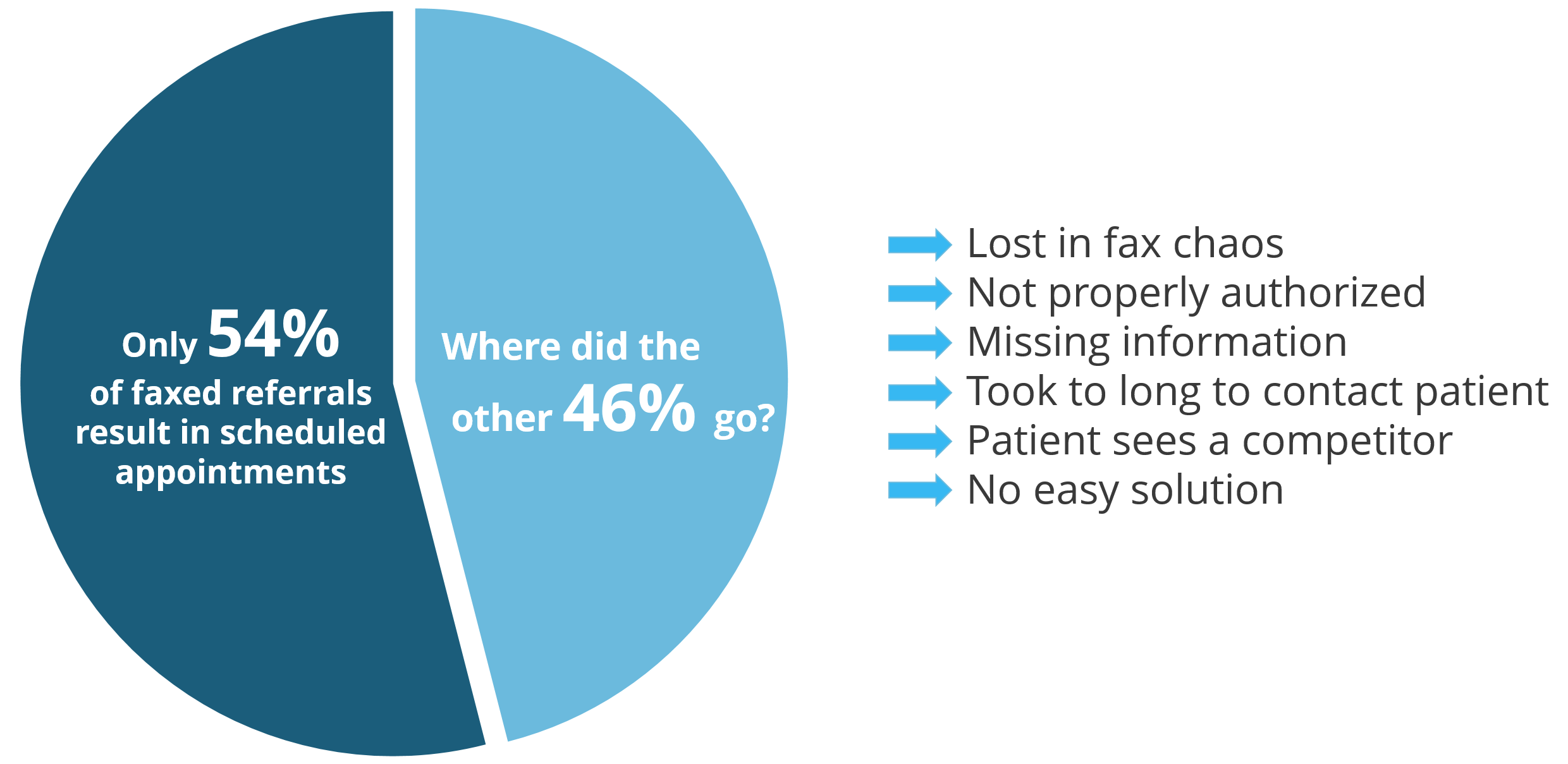
22. Roughly 25% of all U.S. hospital spending consists of administrative costs.
According to a study by The Commonwealth Fund, U.S. hospital administrative costs exceed those of eight other major nations by a fair margin. All of the nations examined struggle with rising healthcare administrative costs, but the U.S. remained an outlier. If they had been able to reduce per capita administrative spending to the level of Canada in 2011, then they would have been able to save up to $150 billion. Higher physician pay, a focus on specialty care, and the use of advanced technology are some of the reasons that the U.S. is leading the pack when it comes to health care spending. This is not to mention the fees associated with coding, billing, etc. for U.S. health insurers and providers.
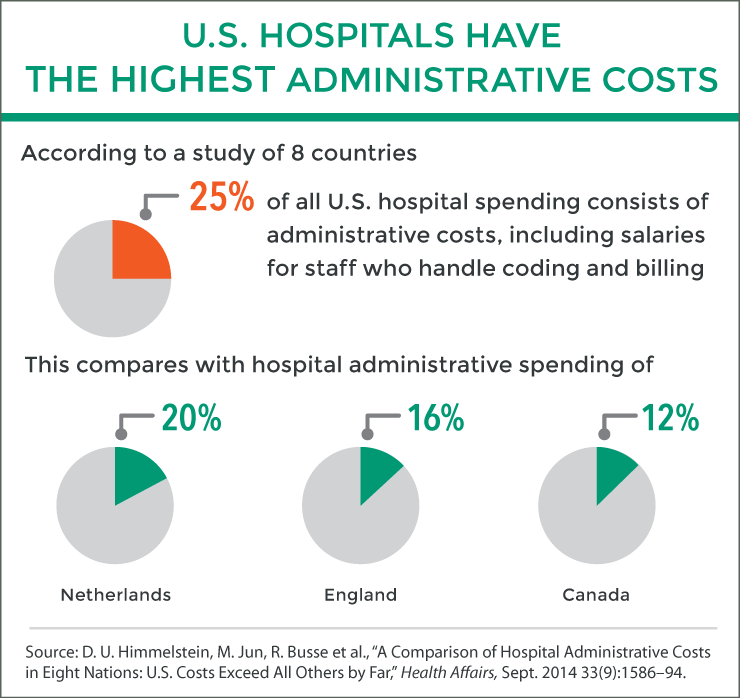
23. There are more than 7,000 deaths and more than 500,000 preventable injuries from medication errors.
Errors in health care are a leading cause of death and injury in this country. Unfortunately, many of these errors are preventable. Medication-related error, in particular, is among the most common and substantial. Because prescription drugs are widely used, and the prescribing process is well documented, it is easy to identify and magnify the medical mismanagement associated with these adverse instances.
24. In 2015, only 59% of U.S. hospitals routinely electronically notified the patient’s PCPs upon emergency room entry.
Three in five non-federal acute care hospitals routinely electronically notify a patient’s PCP when he or she is admitted into the hospital’s ER. Only one in three notify PCPs outside of the health system. This lack of communication leads to poor care continuity.
25. From 2014 to 2015, the number of individuals affected by protected health information breaches increased from approximately 1.8 million to approximately 110 million.
The following findings are from the U.S. Department of Health and Human Services:
“Based upon data collected by the HHS Office for Civil Rights, as of February 1, 2016, protected health information breaches affected over 113 million individuals in 2015. In 2015, hacking incidents comprised nearly 99% of all individuals affected by breaches, and the number of reported hacking incidents, 57, comprised over 20% of all reported breaches. From 2011 to 2014, 97 hacking incidents affected less than 4 million individuals – less than 10% of all reported breaches and affected individuals during this time.
However, despite the rise in breaches related to hacking incidents, reported breaches related to other incidents and the number of individuals affected by these breaches are down in 2015. Through February 1, 2016, theft, loss, improper disposal, and unauthorized access or disclosure of protected health information comprise 208 of all reported breaches (N=265), down from 216 (N=285) in 2014 and 211 (N=262) in 2013. These four types of breach incidents affected 1.4 million individuals in 2015, compared to 10.7 million in 2014 and 6.7 million in 2013.
In 2015, four of the fifty-one hacking incidents involved an electronic medical record (EMR). One hacking incident affected 3.9 million individuals’ health information – nearly all the individuals affected by an EMR hacking incident in 2015.” (U.S. Department of Health and Human Services (HHS) Office for Civil Rights. Breaches Affecting 500 or More Individuals)
26. 91% of healthcare practices are using cloud-based services, yet 47% are not confident in their ability to keep data secure due to manual workflow processes.
With any cloud-based service, especially in health care, it is very important to know how secure their servers are and what measures are taken to ensure that. As the statistic above has shown us, the number of individuals affected by protected health information breaches is rising drastically, and as more and more health organizations look to cloud-based software to store patient records, it is vital that they invest in reputable and secure vendors.
27. 17,000 patient records are breached per day on average.
![]() 12% of healthcare practices have reported at least one known case of medical identity theft. Practices or institutions that suffer these breaches are many times not able to recover from them. They lose credibility with both prospective patients and referring providers.
12% of healthcare practices have reported at least one known case of medical identity theft. Practices or institutions that suffer these breaches are many times not able to recover from them. They lose credibility with both prospective patients and referring providers.
It is important to install all OS updates and patches on your servers and workstations, while also keeping your antivirus up to date.
28. Only 41% of U.S. hospitals in 2013 reported that their providers are able to send and receive secure electronic messages with patient health information to and from external sources.
Only 4 in 10 hospitals report that their providers can send and receive secure electronic messages withholding confidential patient health information to and from sources outside of the health system or organization.
This is troubling in today’s healthcare world as many patients see multiple providers in and out of network. For quality and transparent care to be possible, it is essential that these providers be able to communicate with each other so that they can provide the best care possible to their patients.
![]()
29. Almost 70% of individuals report that they were not provided access to their clinical laboratory test results in 2012.
Back in 2012, only 3 in 10 individuals reported having direct access to their clinical laboratory results, either in paper or electronic format. With patients increasingly taking more responsibility for their health care, it is vital for the hospital or lab to be transparent with tests and results so that patients are informed when making critical decisions.
30. Researchers project that there will be $48 – $66 billion added to current health care costs each year between now and 2030.
A study at the Mailman School of Public Health at Columbia University shows that U.S. healthcare costs are expected to reach up to $66 billion a year (specifically from the obesity epidemic that is plaguing this country).
Final Thoughts:
Healthcare costs continue to rise, it is vital that healthcare executives and hospital managers create a strategic plan to address the 30 statistics above. If they do not, or if they become complacent, then there will be massive repercussions in the years to come.




